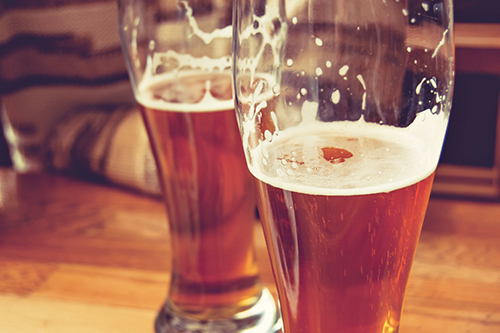
By Jack Kenny

Jack Kenny, Beer Columnist
The March column presented a few facts about canned beer that were aimed at dispelling some inaccurate beliefs, such as beer from a can tastes metallic. That’s a good example of a myth, a belief acquired in one place or from one source and spread to another without the knowledge that it’s partly or wholly wrong.
Myths are part of the fabric of life. No doubt your mom or grandma told you that if you went outside in winter without a hat you would catch a cold. They didn’t know the science, but hey, it sounded sensible. Did you know that Charles Manson auditioned to become a member of The Monkees in 1965? That’s another one. Myths are everywhere, and the internet is doing its best to keep it that way. It follows, then, that there are plenty of beer myths.
The British serve their beer at room temperature.
Real ale in English pubs is served at cellar temperature. That’s where the kegs are kept. Cellars over there are cooler than ours, and the beer is usually at 50° to 55° F, which is a perfect range if you want to taste your beer.
Stouts are heavy, and other dark beer nonsense.
How many times have you heard it? Usually said in a whine. When confronted with this claim, I offer my boilerplate response: Guinness Draught has less alcohol than a commercial lager beer, it has fewer calories, and it weighs less, so it will float on top of a lager. It’s true. By “heavy” they meant to say “rich tasting,” meaning that the roasted grains give it a bigger and more complex flavor. Oh, and this one: Dark beers are stronger than lighter ones. Nope.
Before Louis Pasteur, all beers were sour.
Smart folks can’t be faulted for believing this, because it can make sense even though it’s not correct. Nobody knew what yeast was until Pasteur, in the 1850s, saw it under his microscope and figured out that it was a one-celled plant. Beer was made by saving some foam during the fermentation of one batch and introducing it to the next batch. All kinds of things could and did go wrong, including the invasion of wild yeasts. Those alone will make a beer sour.
In 1883, a Danish scientist named Emil Christian Hansen isolated a pure yeast cell and cultivated it under clean conditions to create the first batch of untainted lager yeast. After that, beer purity roared ahead. Documents exist, however, from centuries past whose authors wrote happily about sweet beers and bitter beers. Brewers knew and remarked on the benefit of cool winter weather for preserving beer taste, because the brew soured in summer. Germany, for one, prohibited brewing in summer.
Pumpkin ales are made with pumpkins.
Probably some of them are, with just enough so that the brewers can sleep at night. But really … What does pumpkin taste like? Not much. As far as I know, only squirrels eat them raw. Pumpkin beers should properly be called “pumpkin pie beers” because that’s the aroma and flavor that comes through, right? Nutmeg, cinnamon, allspice, clove. And that’s what you’re drinking.
Bubbles on the inside of the beer glass are a good sign.
Bubbles on the inside of the beer glass are a sign, all right. Your glass is dirty. Google it.
Ales are stronger than lagers.
Also, ales are more expensive than lagers. One old fella told me that ales are rough, but lagers are smooth. Most of this is false. As with dark and light beers, ales and lagers can be strong or weak. The type of beer has nothing to do with alcohol level. An average consumer, noting the affordable price tag on a 30-pack of commercial lager, probably assumes that ales are for the snooty bunch who can afford them. The truth is that lager takes quite a bit longer to make than ale does, meaning that it ties up brewing equipment and ends up costing more per drop. That’s why most craft brewers make ales. The beer giants make lagers to satisfy a demand that they created generations ago, and economy of scale works in their favor.
All beer is bitter.
Here, have a Belgian tripel, or a German doppelbock.
Jack Kenny has been writing the Beer Column for The Beverage Journal since 1995. Write to him at thebeercolumn@gmail.com.



